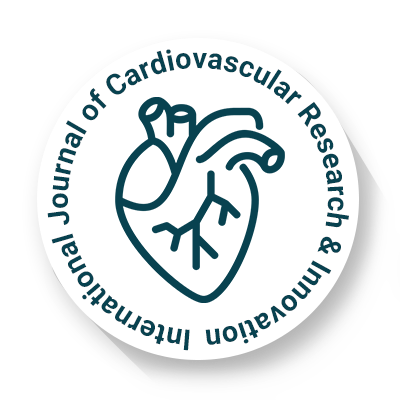
International Journal of Cardiovascular Research & Innovation
OPEN ACCESS

OPEN ACCESS
Cardiac remodeling refers to the structural and functional changes in the heart in response to physiological and pathological stimuli. This dynamic process involves alterations in the size, shape, and function of the heart, primarily affecting the myocardium. While adaptive remodeling can support cardiovascular function under stress, maladaptive changes contribute to heart failure and other cardiovascular disorders.
Cardiac remodeling can be triggered by various factors, including hypertension, myocardial infarction, volume overload, and genetic predispositions. The process is driven by complex molecular and cellular mechanisms, involving neurohormonal activation, oxidative stress, and inflammatory pathways. Over time, these influences can lead to myocardial hypertrophy, fibrosis, and changes in ventricular geometry, which ultimately impact cardiac output and efficiency.
One of the most recognized forms of cardiac remodeling is left ventricular hypertrophy (LVH), often seen in response to chronic pressure overload conditions such as hypertension. In this scenario, the heart muscle thickens to compensate for increased workload, but excessive hypertrophy can reduce ventricular compliance and lead to diastolic dysfunction. On the other hand, post-myocardial infarction remodeling involves myocyte loss, scar formation, and ventricular dilation, which weakens contractility and predisposes patients to heart failure.
The transition from compensatory to maladaptive remodeling is influenced by persistent hemodynamic stress and dysregulated cellular signaling. Prolonged activation of the renin-angiotensin-aldosterone system (RAAS) and sympathetic nervous system can exacerbate remodeling by promoting fibrosis, apoptosis, and adverse metabolic shifts in cardiac cells. Additionally, chronic inflammation contributes to extracellular matrix remodeling, further impairing cardiac function.
Preventing or reversing maladaptive cardiac remodeling is a critical goal in cardiovascular medicine. Several therapeutic strategies have been developed, including pharmacological interventions such as ACE inhibitors, beta-blockers, and aldosterone antagonists, which target neurohormonal pathways to mitigate adverse remodeling. Lifestyle modifications, including exercise and dietary interventions, also play a crucial role in preserving cardiac structure and function. In advanced cases, mechanical support devices and regenerative therapies, such as stem cell-based approaches, are being explored to restore myocardial integrity.
Recent advances in imaging techniques and biomarker research have enhanced the early detection and monitoring of cardiac remodeling. Non-invasive modalities like echocardiography, cardiac MRI, and molecular imaging provide valuable insights into structural and functional changes, enabling personalized treatment strategies for at-risk patients.
Understanding cardiac remodeling is essential for improving cardiovascular health outcomes. By addressing the underlying mechanisms and employing targeted interventions, the progression to heart failure and related complications can be significantly reduced. Journals like the International Journal of Cardiovascular Research & Innovation serve as vital platforms for disseminating groundbreaking research, fostering collaboration, and driving advancements in cardiac care.